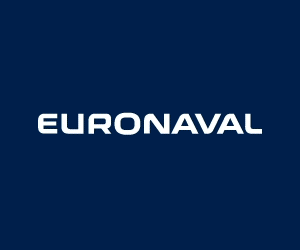While NATO’s Dynamic Messenger has a focus on integrating maritime unmanned systems into maritime operations, Robotic Experimentation and Prototyping with Maritime Unmanned Systems focuses on capability development and interoperability. Both exercises are enabled by significant partnerships between industry and academia, a true reflection of multi-domain operations.

“Alongside a commitment to digital transformation, Dynamic Messenger 2023 contributes to NATO’s efforts to become a Multi-Domain Operations-enabled Alliance. The exercise is a venue which allows for consultation and collaboration with industry and academia and, this year, provides Allied Command Transformation an opportunity to introduce our new Operational Experimentation Emerging Disruptive Technologies Task Force,” said Supreme Allied Commander Transformation, General Philippe Lavigne.
Beginning on September 25, 2023, fourteen NATO nations and one Partner Nation will participate in Dynamic Messenger, along with three observer nations. Approximately 1100 civilian and military personnel are involved in the exercise ashore. In addition, around 1000 personnel are participating as part of the crews on the ships.

The second edition of the operational experimentation exercise is based around the Navy Operational Experimentation Centre, in Tróia, Portugal. The Centre is one of two Portuguese Defence innovation Centres under the NATO Innovation Accelerator, “Defence Innovation Accelerator for the North Atlantic” (DIANA).
Allied Command Transformation, alongside Allied Maritime Command will execute several operational experiments to explore and implement its Multi-Domain Operations concept and derive observations, analysis, and lessons learned that can feed the development of the Alliance’s tactics, techniques, and procedures in the use of maritime unmanned systems.
Warfare areas that will employ maritime unmanned systems in experiments include the protection of undersea infrastructure, naval mine warfare, maritime security operations, force protection, underwater warfare, amphibious operations, and medical and logistical operations.

Concurrent to Dynamic Messenger 2023, Allied Command Transformation will be working towards establishing the initial operating capability of the Operational Experimentation Emerging Disruptive Technologies Task Force in late autumn 2023. This exercise presents an opportunity to explore technologies to advance the Autonomy Implementation Plan. Through these operational experiments, the Task Force will identify technology options for further experimentation in 2024. Additionally, the Task Force team will be refining objectives and evaluation criteria for future events focused on Intelligence, Surveillance and Reconnaissance and situational awareness within the maritime domain.
In addition to furthering the understanding of maritime unmanned systems, Dynamic Messenger 2023 contributes to NATO’s efforts to become a Multi-Domain Operations-enabled Alliance, bolstered by Digital Transformation. Notably, the exercise will broaden NATO’s understanding through consultation and collaboration with industry, enabling a deeper understanding of Multi-Domain Operations. This exercise will also enhance data management, tailoring the tactical, operational, and strategic pictures in accordance with the Alliance’s broader Digital Transformation objectives.
A notable highlight of this year’s Dynamic Messenger exercise is its efforts to experiment with Emerging Disruptive Technologies to address the threat to critical undersea infrastructure. As noted at the Vilnius Summit, while the “protection of Critical Undersea Infrastructures on Allies’ territory remains a national responsibility […] NATO stands ready to support Allies if and when requested.” The support provided by Allied Command Transformation will contribute to enhancing NATO’s Maritime Common Operating Picture at the tactical and operational levels by providing indications and warnings of potential threats, as well as the ability to vector NATO assets to investigate and prosecute threats, respectively.
The Centre for Maritime Research and Experimentation is also participating in scenarios that demonstrate interoperability of Command, Control, Communications and Computers for unmanned systems. These experiments test system of systems autonomy between the Centre and partner autonomous systems, using the Collaborative Autonomy Tasking Layer, for mine countermeasure and critical underwater infrastructure protection missions.













![Reliant: new long-range UAS by Quantum Systems [VIDEO]](https://defence-industry.eu/wp-content/uploads/2024/05/Reliant-new-long-range-UAS-by-Quantum-Systems-VIDEO.jpg)
















